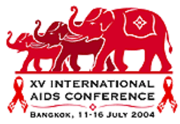 |
 |
 |
| |
Safety and tolerability of vaginal tenofovir gel (TFV) in HIV-uninfected and HIV-infected women (HPTN 050)
|
| |
| |
|
|
| |
| |
 |
|
| |
| |
Abstract ThOrB1373
K H Mayer1, L Maslankowski2, W El-Sadr3, J Justman4, B Masse5, C Hendrix6, J Rooney7, A Kwiecien8, L Soto-Torres9
1Miriam Hospital/Brown University, Providence, United States; 2University of Pennsylvania, Philadelphia, United States; 3Harlem Hospital, New York City, United States; 4Bronx-Lebanon Hospital, New York City, United States; 5University of Washington, Seattle, United States; 6Johns Hopkins University, Baltimore, United States; 7Gilead Pharmaceuticals, Foster City, United States; 8Family Health International, Arlington, United States; 9NIAID, Bethesda, United States
The purpose of this study is to determine the highest tolerated combination of either 0.3% or 1% tenofovir gel (TFV) applied once or twice daily for two weeks in low-risk, sexually abstinent and active HIV(-) and then in abstinent and active HIV (+) women. TFV gel pharmacokinetics (PK) and effects on genital HIV shedding were also studied.
Safety labs and pelvic exams were completed at screening, enrollment, Day 2-3, Day 7 and Day 14 visits with colposcopy at enrollment and at Day 14. PK samples were collected after the first product application and on Day 13. Adverse events (AE) were graded based on NIH criteria.
At the time of analysis, 60 HIV(-) and 20 HIV(+) women had completed the protocol, out of 84 expected to be enrolled. Since 1% TFV gel BID was well-tolerated in HIV (-) abstinent women, this regimen was used in sexually active HIV(-) and in abstinent and sexually active HIV(+) women.
Although 91% reported at least 1 AE, the majority were mild (88%) and limited to the GU tract (70%). Four severe AE were reported, with only one, lower abdominal pain, thought to be product-related.
Using Nugent's criteria, of 29 women who had asymptomatic bacterial vaginosis (BV) at baseline, 14 women cleared it after 14 days of TFV gel use, while 1 of 39 woman without BV at baseline, had BV detected at 14 days; 43% of the pts. had asymptomatic BV at baseline compared to 24% of the women after 14 days of TFV gel use (p=0.0008).
Fourteen of 25 women with PK results had low, but detectable, serum TFV levels (maximum concentrations ranged from 3.1-25.8 ng/ml; limit of quantitation: 3.0 ng/ml). No clinically significant systemic toxicity was detected.
The authors concluded that Tenofovir vaginal gel used 1% BID was well-tolerated in abstinent and sexually active HIV(-) and HIV(+) women, with limited systemic absorption and with possible beneficial effects on vaginal microflora. Extended safety and effectiveness studies are warranted, based on these initial data.
|
| |
|
 |
 |
|
|